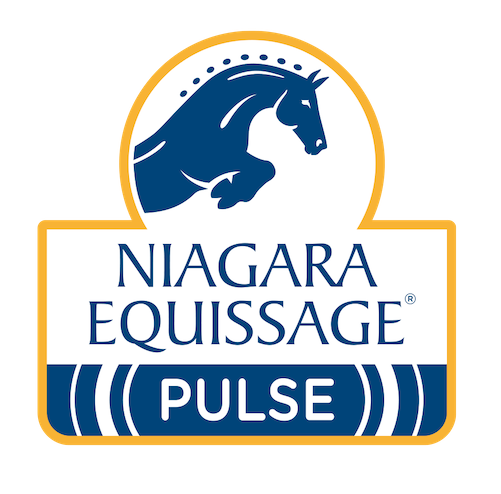Kissing Spine
Kissing spine (spinous process impingement) is where the large spines which stick upwards from the vertebrae in the horse’s back rub together and cause low grade inflammatory changes in the edges of the bone where they meet.
Most commonly seen in competition horses due to the demands placed upon them, kissing spine can be mild or severe.
Horses affected from kissing spine may;
- Have a decrease in performance
- Show reluctance to jump
- Demonstrate unpredictable behaviour when being ridden (e.g. bucking, rearing and bolting)
- Become extremely stiff
Some horses with kissing spine are sensitive when touched around the affected area and may feel pain when the girth is tightened.
Can Niagara Equissage help with kissing spine?
With regard to Kissing Spine it is important to be aware of the severity of the condition for the particular horse concerned i.e. the exact location of the affected vertebrae and whether the spinal processes are actually overlapping, are just very close or just touching. Your vet will be able to explain this to you. To apply Niagara Equissage without this knowledge could cause considerable discomfort and possibly an extreme reaction. When and how to use Niagara Equissage will depend on the course of treatment the vet prescribes. In the more severe cases, surgery is considered to be the best option, although unfortunately such treatment does not always prove to be successful.
For less severe cases of kissing spine where the administering of anti-inflammatory and pain-relieving drugs is the chosen treatment course, daily use of Equissage can help this condition. This is because Niagara Equissage helps promote good muscle tone (due to improved circulation and the positive effects the deep vibratory massage has) and it is very important in Kissing Spine cases that the muscles of the back are routinely worked into order to be of maximum support.
For the horse that has undergone surgery, then Niagara Equissage comes into its own not only as the perfect physiotherapy tool to aid recovery from the operation itself but also to gently start “working” the muscles long before any rehabilitative ground training work can commence. As the horse will be on box rest for a while, using Niagara Equissage as part of the daily management routine will help guard against other secondary conditions manifesting such as filled legs and stiffness.
Application
The quicker Niagara Equissage can be used the better to help with post-operative recovery. However, much will depend on the exact site of the operation as obviously the Back Pad cannot sit on, or be too close to the surgery site. If the Back Pad can be used then a setting of 2 will be quite sufficient as treatment must not be too vigiorous. For kissing spine, use the Back Pad for just 10 minutes twice a day to begin with, gradually increasing to 20-30 minutes if you wish, but do not increase the setting. The Hand Unit can of course be used on other parts of the body to help prevent stiffness in muscles. If the Back Pad cannot be used, then use the Hand Unit on the areas of the back which can be treated without interfering with the surgery site.
Once ground work can commence then a higher setting can be used as a warm-up prior to exercise provided the horse doesn’t show any signs of discomfort; then use the lower setting as a warm-down to relax the muscles and guard against stiffness. Apply either side of the spine, not directly along it. The Hand Unit can also be used on the hamstrings and other problem areas an individual may have.

Testimonials
See All- "I find the horses love their treatment with the Niagara Equissage. I like the way the Back Pad massages the full body of the horse. We use it all the time and there are NO negatives."
- The circulatory benefits I see from the Back Pad creates an essential foundation of muscle relaxation on which to work. TheHand Unit is very efficient in targeting specific areas prior to addressing muscle/soft tissue problems such as trigger or stress points. Niagara Equissage is an important partner in my work to achieve performance improvement for my clients.
- "I use the Niagara Equissage on a regular basis at home and would not dream of going to a show without it. Our horses are athletes and we expect tremendous fitness and performance from them. The Niagara Equissage helps prevent injuries so we can have healthy, comfortable, riding partners. It aids tremendously in the warm up and cool down phases of work. The horses always look forward to their massage time!"

